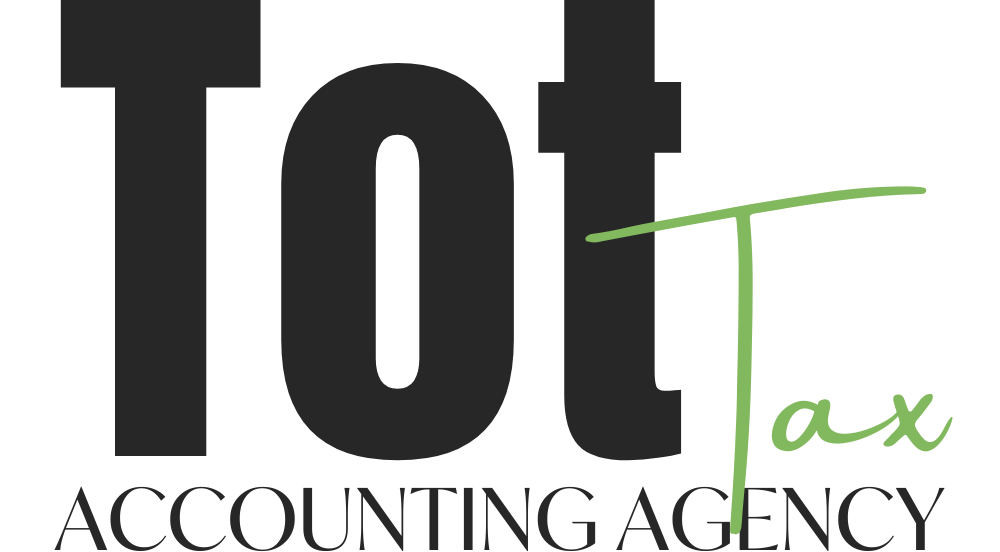Why Your Desk Hates Your Tax Organizer – And How to Win It Over
Ah, the humble desk: champion of support, keeper of secrets, and now, unfortunate battleground for the piles of paperwork that tax season mercilessly delivers. If desks had feelings, yours would probably be on the brink of a nervous breakdown every time you fling another form or receipt onto its already burdened surface. But it doesn’t have to be this way. Your tax organizer, that all-important tool meant to bring order to chaos, doesn’t have to be the object of your desk's disdain.
You see, the problem isn’t just the clutter. It’s what that clutter represents—lost opportunities, overlooked deductions, and perhaps a bit of last-minute panic. With the right strategy, that tax organizer can transform from a paperweight into a powerhouse of efficiency and insight, making life easier not just for you, but for your steadfast desk as well.
Let’s cut through the clutter. It’s time to make your tax organizer—and by extension, your desk—a testament to your savvy as a business owner. Whether you handle your finances solo or lean on accounting & bookkeeping services, mastering the art of the tax organizer is mastering the art of business readiness.
Why You and Your Tax Organizer Aren’t Getting Along
The tax organizer is your supposed lifeline through the complex tax season. Meant to be a beacon of order, too often it ends up as a monument to frustration. Why is it that what should simplify ends up complicating things even more?
The very nature of a tax organizer suggests a promise of simplicity: a tool where you can neatly compile deadlines, documents, and data. However, reality often paints a different picture. Instead of a streamlined process, you find yourself wading through a swamp of paper forms, receipts, and various digital documents scattered across different devices. This is a recipe for headaches and hiccups that can lead to real financial mishaps.
Think about the last time you used your business tax organizer. Was everything you needed right at your fingertips, or did you find yourself digging through emails, drawers, and old shoeboxes to find that one elusive receipt from three quarters ago? This common scenario underscores a critical flaw: the traditional tax organizer often lacks integration with the digital tools we use daily.
Moreover, your client tax organizer isn't just a place to stash paperwork—it's supposed to be an active part of your financial management system. Yet, without the ability to seamlessly integrate with your accounting software or digital banking records, it falls short of its potential. It’s like having a high-powered sports car but no gasoline; it looks impressive, sure, but it isn’t going anywhere fast.
This gap between expectation and execution isn't just a minor inconvenience. It's a barrier to effective financial management, making it tougher than it needs to be to stay on top of your taxes and maintain a clear financial picture. What you need isn't just a container for your documents; you need a dynamic system that interacts with all aspects of your financial life.
Let's set the stage for a revolution in how you manage your taxes, turning your tax organizer from a source of stress to a cornerstone of your financial strategy.
The Hidden Costs of Tax Disorganization
It's one thing to have a tax organizer; it’s quite another to wield it effectively. If you’ve ever felt that tax season is synonymous with panic season, it’s time to consider what your disorganized approach is really costing you—not just in terms of dollars and cents, but in peace of mind as well.
Firstly, let's talk missed deductions. Every crumpled receipt in your desk drawer or lost invoice could be a missed opportunity to save money. Consider the impact of overlooking just a few of these each year. It’s like giving a no-strings-attached bonus to the tax authorities, all because your tax document checklist wasn’t up to snuff. A well-managed tax organizer ensures every potential deduction is accounted for, from those seemingly insignificant expense receipts to the more substantial business purchases.
Beyond the immediate financial implications, there’s the not-so-small matter of stress. Dealing with a mountain of disorganized paperwork can turn tax filing from a routine task into a Herculean ordeal. Stress has real, tangible effects on your ability to run your business effectively. When your focus is fragmented by concerns over untidy financial records, every aspect of your business—from innovation and growth to daily operations—suffers.
So, how do you turn this around? For starters, employing a small business tax organizer tailored to your specific needs can transform the way you handle your finances. Think of it as less of a binder or software and more of a strategy that you adapt year-round. Instead of scrambling at the end of the fiscal year, maintain a consistent routine that allows you to slot in information and documents as they come.
Integrating a tax return organizer into your routine can further streamline the process. This isn’t just about keeping your receipts in order; it’s about maintaining a clear, ongoing record of incomes, expenses, and potential deductions regularly. With this system, when tax time rolls around, you'll simply review and refine rather than rebuild your financial history from scratch.
Remember, your tax organizer is your financial diary. Keeping it up-to-date and comprehensive is crucial. This approach not only ensures you’re prepared for tax season but also equips you with insights into your financial health, enabling smarter business decisions throughout the year.
Strategies to Make Your Tax Organizer Work for You
Gone are the days when managing your taxes meant drowning in paper. An electronic tax organizer is your new best friend. It’s time to transition to digital solutions that not only organize but also safeguard your documents. Tools like cloud-based accounting software can synchronize with your financial accounts in real time, giving you an up-to-date view of your finances without the hassle of manual entries.
For starters, consider a platform that integrates with your banking and credit accounts, automatically categorizing transactions as they occur. This not only saves time but also ensures that every entry is accounted for, minimizing errors and the dread of tax time surprises.
Integrate Seamlessly Into Your Daily Routine
Integrating these tools into your daily business operations might sound daunting, but it’s surprisingly simple. Schedule a regular weekly appointment with yourself to review your tax document organizer. This could be a quiet half-hour on Friday afternoons where you verify that all transactions are categorized correctly, receipts are uploaded, and any anomalies addressed. This habit ensures that your organizer is always ready, come tax season or financial review.
Automate to Liberate
Why stop at manual updates? Automation is the key to making your tax management effortless. Many digital tax organizers offer features that allow you to set rules for how transactions should be categorized. For example, all payments to a particular supplier can automatically be flagged as 'business expenses'. Over time, these tools learn from the patterns in your data, making smarter categorizations without your input.
Using an app or software that provides alerts for important tax dates or deadlines is another smart move. These notifications ensure you never miss a payment or filing deadline, which can save you from penalties and last-minute scrambles.
Regular Updates: The Backbone of Effective Tax Organization
Keeping your electronic tax organizer updated might seem like a chore, but it’s crucial for maintaining control over your finances. Each update not only provides a clearer picture of your current financial health but also prepares you better for future financial planning and audits.
By transitioning to a tax document organizer that lives in the digital realm, you ensure that your financial data is comprehensive, secure, and continuously updated. This isn't just about avoiding the wrath of a cluttered desk—it's about taking proactive steps to ensure your business's financial health is always in peak condition.
Streamlining Your Tax Documentation
Tax season doesn't have to be the annual siege on your sanity. With a few clever strategies and a bit of organizational wizardry, your tax organizer can go from being a dusty folder on your shelf to your most trusted ally in the battle against bureaucracy.
Let's talk about categorizing expenses.
You already track them, right? But are you categorizing them monthly? This isn’t just about keeping things neat; it’s about making your life infinitely easier come tax time. When you break down your expenses month by month, you're arming yourself with a detailed financial narrative of the whole year. This method lets you see trends, track profitability, and adjust strategies on the fly. Plus, it turns your end-of-year tax prep from a nightmare into a neat, manageable process.
Now, about those piles of receipts and invoices—you can tame them with a color-coded system. Use different colored folders, tabs, or even digital labels if you’re storing documents electronically, to instantly identify categories like utilities, rent, office supplies, and travel expenses. This isn’t just about making your tax organizer look pretty; it’s about saving precious time. You won't be sifting through a mountain of paper every time you need to find a transaction. Instead, you'll go straight to the green folder for financials or the blue one for utilities.
Keeping your organizer for taxes up to date is crucial. It’s easy to throw everything in a drawer and forget about it, but the "out of sight, out of mind" approach is a direct ticket to stress city. Schedule a regular update session—maybe an hour each week—to log the latest expenses and income. This keeps your income tax organizer from becoming a time capsule of what your business used to look like, and instead, it becomes a real-time dashboard of your financial health.
By integrating these strategies into your routine, not only do you streamline your tax documentation, but you also enhance your overall approach to business management. If you're looking to take things to the next level, consider partnering with accounting & bookkeeping services. These experts do more than crunch numbers; they provide strategic insights that can help grow your business, ensuring that your tax organizer is not just managed, but optimized.
-
A: A tax organizer is a tool, typically a folder or digital document, designed to help individuals, freelancers, and small business owners systematically gather and organize all necessary financial documents and information required for tax preparation. It facilitates accurate and timely filing of tax returns by ensuring that all relevant receipts, invoices, expense reports, and income statements are easily accessible and well-sorted.
-
A: A receipt for tax purposes is a documented proof of a financial transaction that serves to verify and justify expenses claimed on tax returns. For individuals, freelancers, and small business owners, maintaining receipts is crucial as they substantiate deductions and credits claimed, helping to minimize tax liabilities legally. These receipts should detail the date, amount, and nature of the transaction and must be kept organized to support the entries made in tax filings and ease potential audits.
-
DA: To print a blank organizer for your taxes, you’ll first need to find or create a template that suits your specific needs. Many accounting software programs offer customizable templates that you can adjust to fit your business's unique requirements. Once you have your template:
• Open the template in your software or a PDF viewer if it’s a PDF file.
• Ensure it's set to your preferences and that it's indeed blank, with no pre-filled information.
• Select the print option, typically found under the 'File' menu.
• Check your printer settings to make sure they are correct (e.g., paper size, orientation).
• Click ‘Print’ to produce your blank organizer.
escription text goes here
READ MORE…
How much does a forensic accountant cost? (Exploring pricing factors and insights)
How a cost accounting system can help you sleep like a baby
5 accounting tips that will help you avoid tax time traumas
Accounting Conferences in 2024: Unmissable trends, tax tips, and tea!




